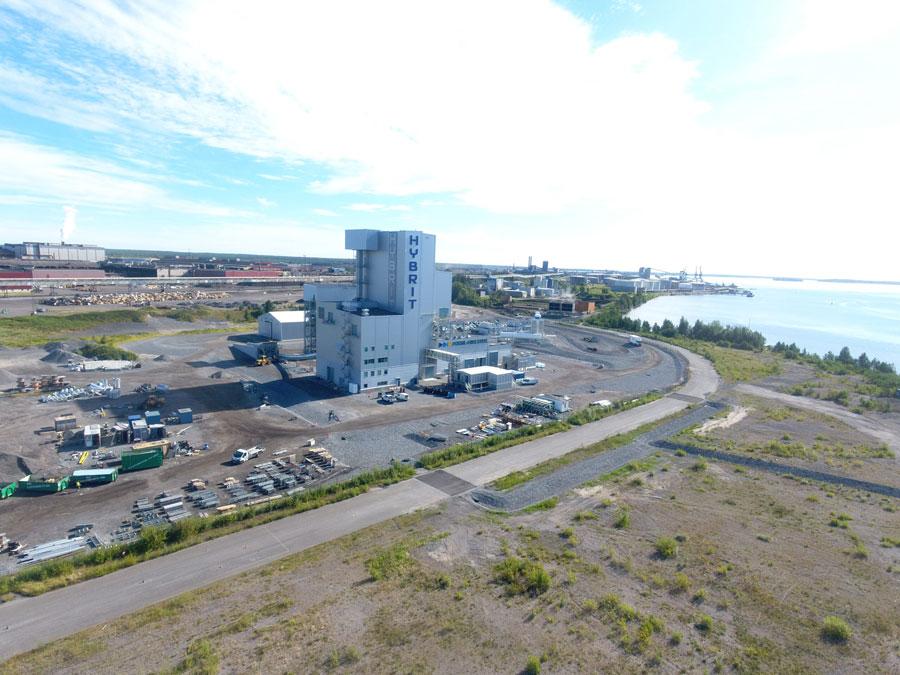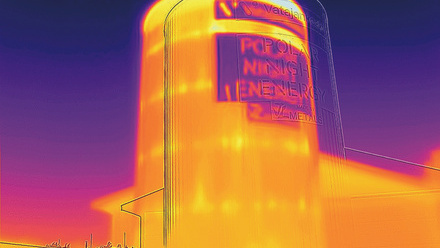Hydrogen reduced sponge iron to cut carbon emissions in steelmaking
Swedish mining company LKAB claims to have produced the world’s first hydrogen-reduced sponge iron at a pilot scale. In doing so, its HYBRIT initiative is said to eliminate 90% of emissions in the steelmaking process.

Swedish mining company LKAB claims to have produced the world’s first hydrogen-reduced sponge iron at a pilot scale. In doing so, its HYBRIT initiative is said to eliminate 90% of emissions in the steelmaking process.
In collaboration with Nordic and US steel company SSAB and Swedish energy company Vattenfall, LKAB has demonstrated that it is possible to use hydrogen made with fossil-free electricity to reduce iron ore instead of using coal and coke at the HYBRIT pilot plant in Luleå, Sweden. Since the direct reduction (DR) pilot has been up and running, the team can produce around one tonne per hour.
Per Lundström, Head of Strategy Mineral Processing at LKAB, says, ‘The pilot plant has a DR shaft, where the reduction takes place, and a number of electrolysers for the production of hydrogen using fossil-free electricity.
‘[The] iron ore, which mainly consists of different iron oxides, is reduced to a porous, solid product of pure metallic iron – sponge iron – at temperatures below the melting point of the iron.
‘The reduction involves removing the oxygen from the iron ore, which is a prerequisite for steel production…The sponge iron will be compressed to form so-called HBI (Hot Briquetted Iron)…In a traditional process, this is done using carbon, coke or natural gas, while in the HYBRIT process the reduction is done using fossil-free hydrogen.’
The hydrogen is produced next to the DR plant and can be used directly or stored.
‘When hydrogen reacts with iron oxide, water is formed instead of carbon dioxide. The water can then be reused for electrolysis in the hydrogen production,’ Lundström adds.
The team is currently running tests continuously 24 hours a day. The pilot plant is on in combination with a distributed control system for controlling feed and product quality. The results can be used to adjust operating parameters.
Lundström states that the team is now making preparations for manufacturing, handling and transporting the new product, which places different demands on both processing and logistics. The next big step is to enable production on an industrial scale.
The challenge in doing this, Lundström explains, is that the team ‘needs to make sure that there are ways to speed up both our own work and also to mitigate any influence from other stakeholders on our implementation time plan’.
Lundström notes that the target when scaling up will be to lower capital/operational expenditure per tonne sponge iron. ‘We also need to put some effort into permitting issues related to country-specific permitting demands, to keep up the pace of the industrialisation.’
Jan Moström, President and CEO at LKAB, says, ‘Progress with HYBRIT enables us to maintain the pace in our transition and already, in 2026, we will begin the switch to industrial-scale production with the first demonstration plant in Gällivare, Sweden.
‘Once LKAB has converted its entire production to sponge iron, we will enable the transition of the steel industry and reduce global emissions by around 35Mta, which corresponds to two-thirds of Sweden’s entire emissions.’







